I watched the HBO show Westworld a few months ago. If you haven’t seen the series, the show is a drama set in the American old west. Except it’s not the old west, it’s the future. A future where robots in the form of humans cater to actual humans who act out their fantasies in a sort of a massive theme park. The robots are virtually indistinguishable from humans. They are not mostly human like the “synthetics” in the Alien movies. This is convenient for HBO since they can hire real actors to play robots. You find out in the show that the humans have issues. Deep issues. So do the robots. And it ends poorly for the humans.
Making a robot look, move and think like a human is a difficult challenge. At this point, we aren’t even close to someone wondering, “Is that a beautiful a woman or a robot?”. AI needs to advance. Robot agility needs significant improvements. And skin is particularly hard to replicate. Human skin stretches and folds in particular ways. It has a distinctive feel when touched. Who is going to like an Instagram hot robot selfie if the robot has strange skin creases? Well some people but not all of us.
In the 1960s, DuPont tried to tackle a similar problem to artificial skin when they researched and developed a porous synthetic (poromeric) leather the company branded as Corfam. It was meant to look, feel and perform like real leather. Only better. And DuPont wanted it to be the material to dominate the shoe industry. DuPont spent $100 million ($600 million in 2017 dollars), developing and marketing the product which was launched in 1964. It was a space age product for the space age.
Long story short, Corfam didn’t replace leather. Consumers still preferred the real thing on their feet. And in 1971, DuPont ended the product and wrote off the investment. Corfam RIP. Another poromeric product called “Aztran” from Goodrich was also ended around the same time. It turned out that “There’s a great future in plastics“, wasn’t true for shoes (Katharine Ross, wow). Other poromeric products are still produced and used in military or golf shoes but none are branded as Corfam.
I have been looking for a good condition or NOS Corfam pair in my size since 2015. I was curious about the material and the history of it. Top shoe manufacturers like Nettleton, Nunn-Bush, Hanover, Stetson and even Edwin Clapp made Corfam shoes. DuPont was promoting and subsidizing the use of the product (see ads below). I was particularly wanting a Nettleton pair since it was Nettleton. I have never seen a Florsheim or Alden model that uses Corfam.
Eventually I found a quality Crosby Square pair in lightly used condition and in my size. Below is a a photo of the pair when I bought them. I doubt they had been worn in 40 years.
What was my first impression of Corfam shoes? They were more leather than not. The soles, heels and lining were leather. And that the upper looked more like plastic than leather. It had a distinctive, unnatural Corfam east-west creases in the vamp. The shoes also smelled liked plastic.
Another reason I wanted a pair was to wear them. I haven’t really found any firsthand accounts of wearing Corfam. Some people mention online that Corfam shoes were hot and uncomfortable. But I doubt that was from real experience since DuPont stopped selling the material in 1971. How bad can they be? DuPont made a very significant investment into engineering the product. And not everything we read is true. At least, someone has been claiming that.
First, I needed to prep the pair for wear. Old Corfam ads claimed it was a miracle material that just needed a wipe for maintenance. I found this claim to be true. The shoes cleaned up easily with just some brushing and a wipe with a damp cloth. I used no polish on them.
Corfam ads also stated that that the material resisted scuffs. But my shoes were scuffed after what appears to be very limited use. After working on them, some of the surface scuffs were removed but the deeper scratches in Corfam couldn’t be easily fixed or covered. They were gouges into the plastic.
The shoes were well made. The quality of construction and materials was similar to higher end shoes of the period.
After the shoes were cleaned, I wore the pair a couple times in one week. Honestly, I never liked the look of the upper “leather”, they looked like plastic to me (which they are). I pride myself on my shoes (snobby, I know), but when wearing this Crosby Square pair, I tried not to look down too much.
The shoes fit well and were generally comfortable. They felt already broken in. I didn’t need to put any band-aids on feet at the end of the day. My feet were also never sweaty and the material did actually “breath”. When I first wore the shoes, the top of vamp dug into my foot when flexed. It didn’t hurt but it was noticeable. It was better after a few hours.
Another noticeable difference between Corfam and leather is that the Corfam upper didn’t stretch like leather when worn. It’s hard to describe the difference but it was apparent when wearing them. They always felt a bit stiff. Like you are wearing plastic shoes.
When I did look down on the shoes, the upper color never grew on me. I did like the shape of the shoes. They reminded me of Allen Edmonds 7-Last used in their MacNeil model. I asked one of the stylish women in my office to give an opinion on the shoes (yes, I am that shallow), and she said they looked good to her. She was surprised when I told her that the upper leather was man-made.
At the end of the day, I had to make the surprising decision of whether to insert shoe trees. Do plastic shoes need them? I ended up using them since much of the shoe was real leather.
Do I recommend you finding and buying a pair of vintage Corfam shoes? No, spend/squander your money on other pairs. I do recommend watching Westworld even though that future will likely never materialize. My belief is that if/when robots come for us, they won’t look like people. And I am certain that they won’t be wearing poromeric shoes.
Below are a number of the Corfam ads from the period.

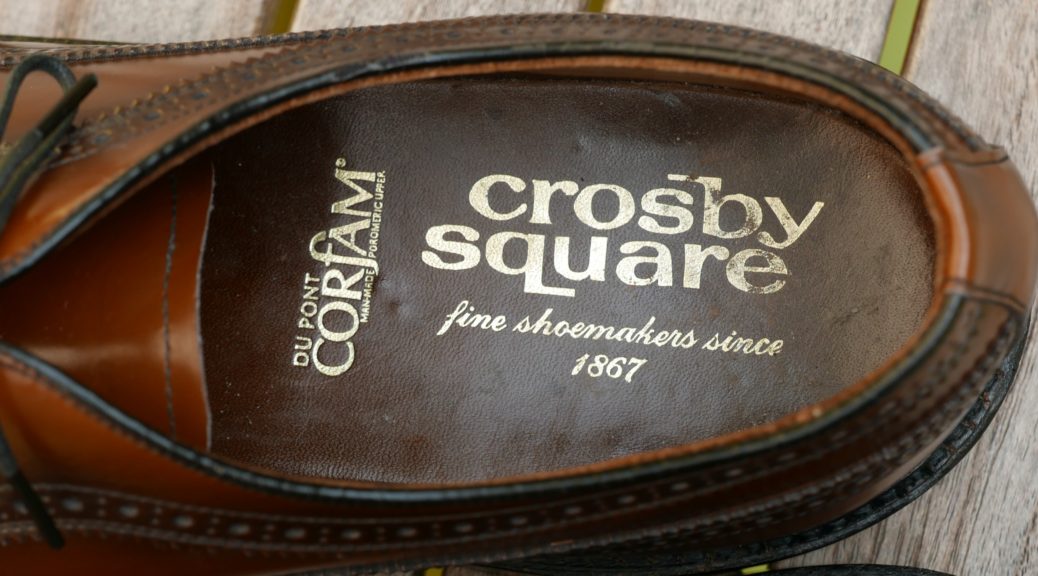
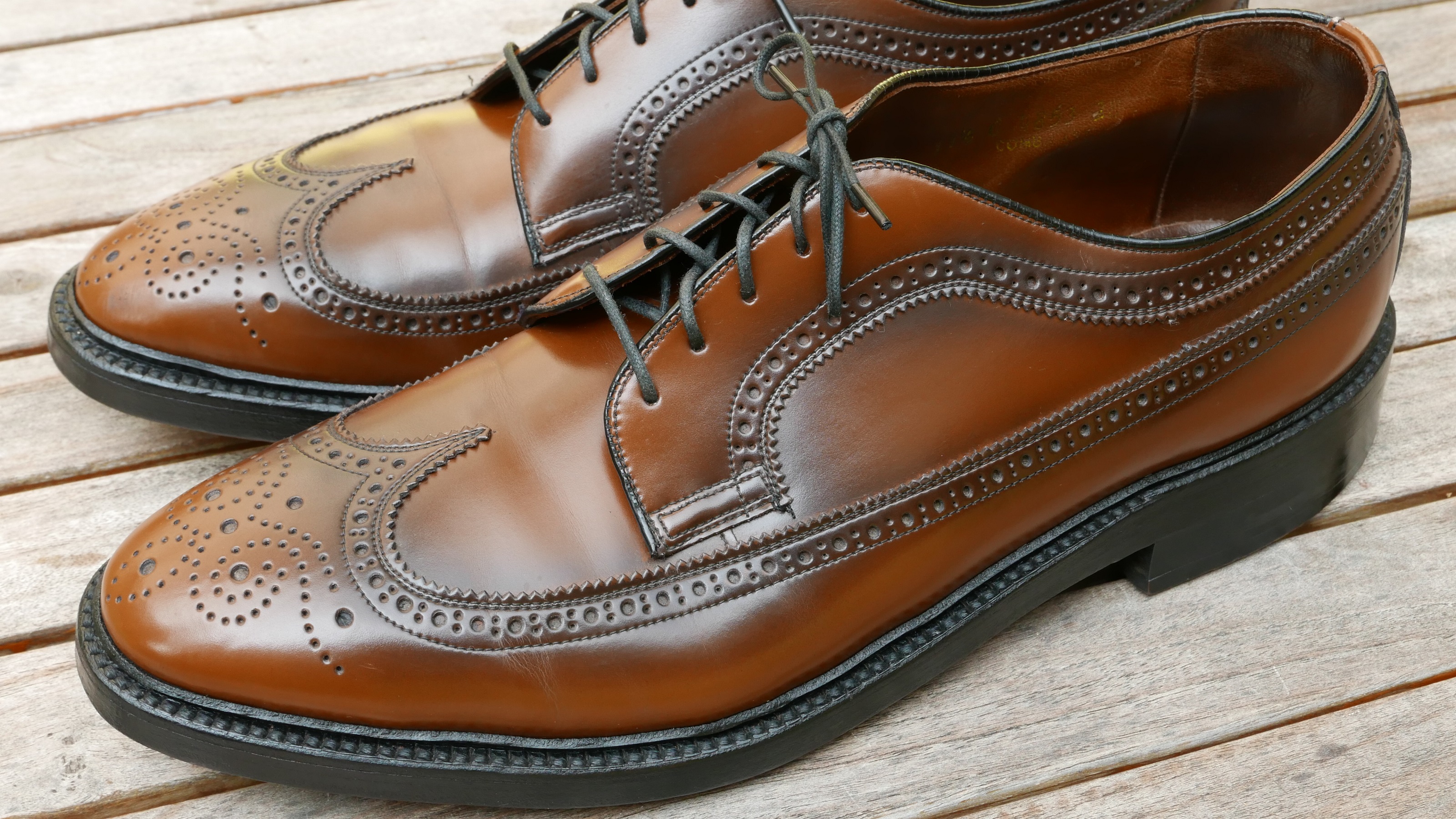
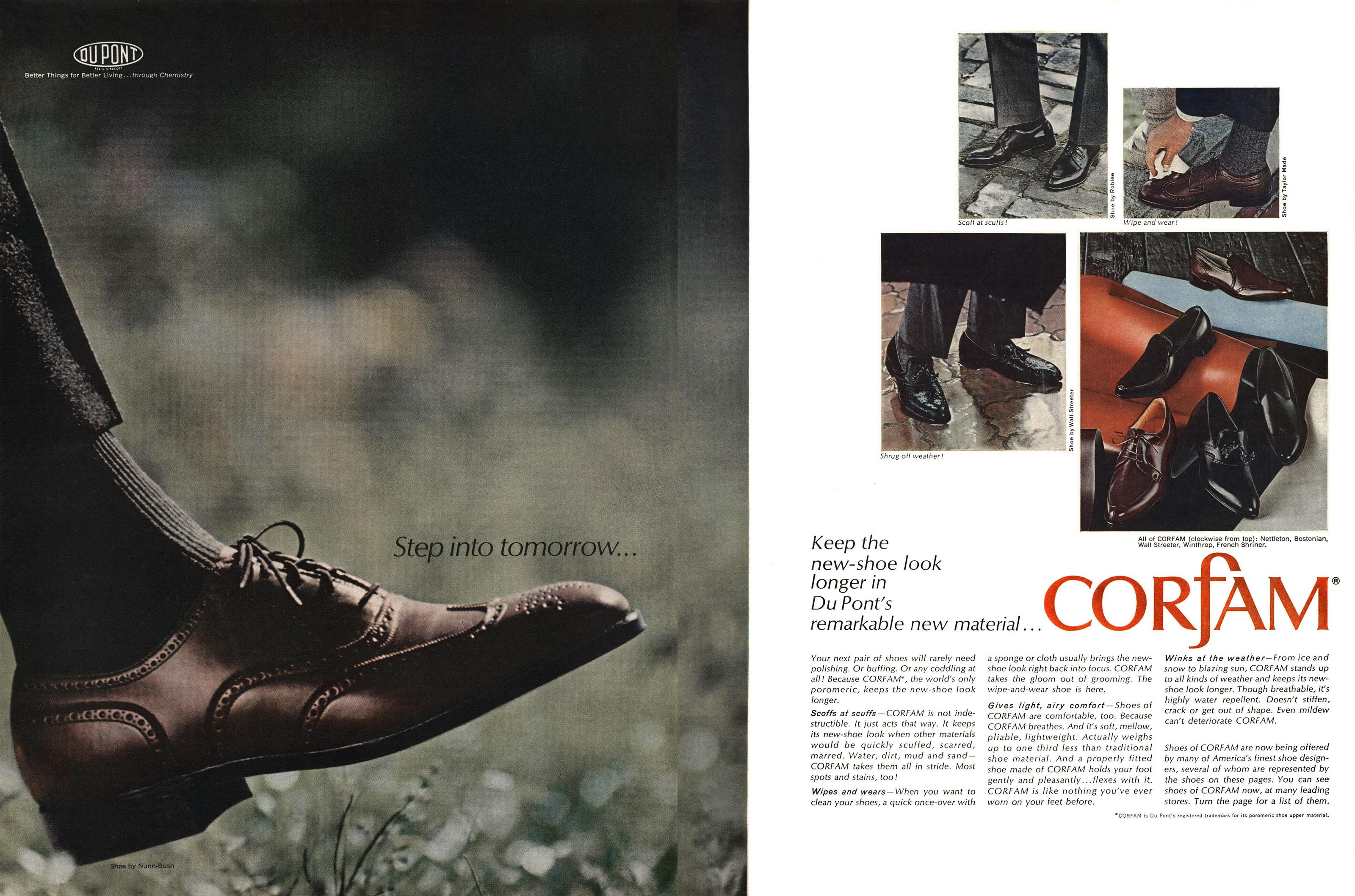
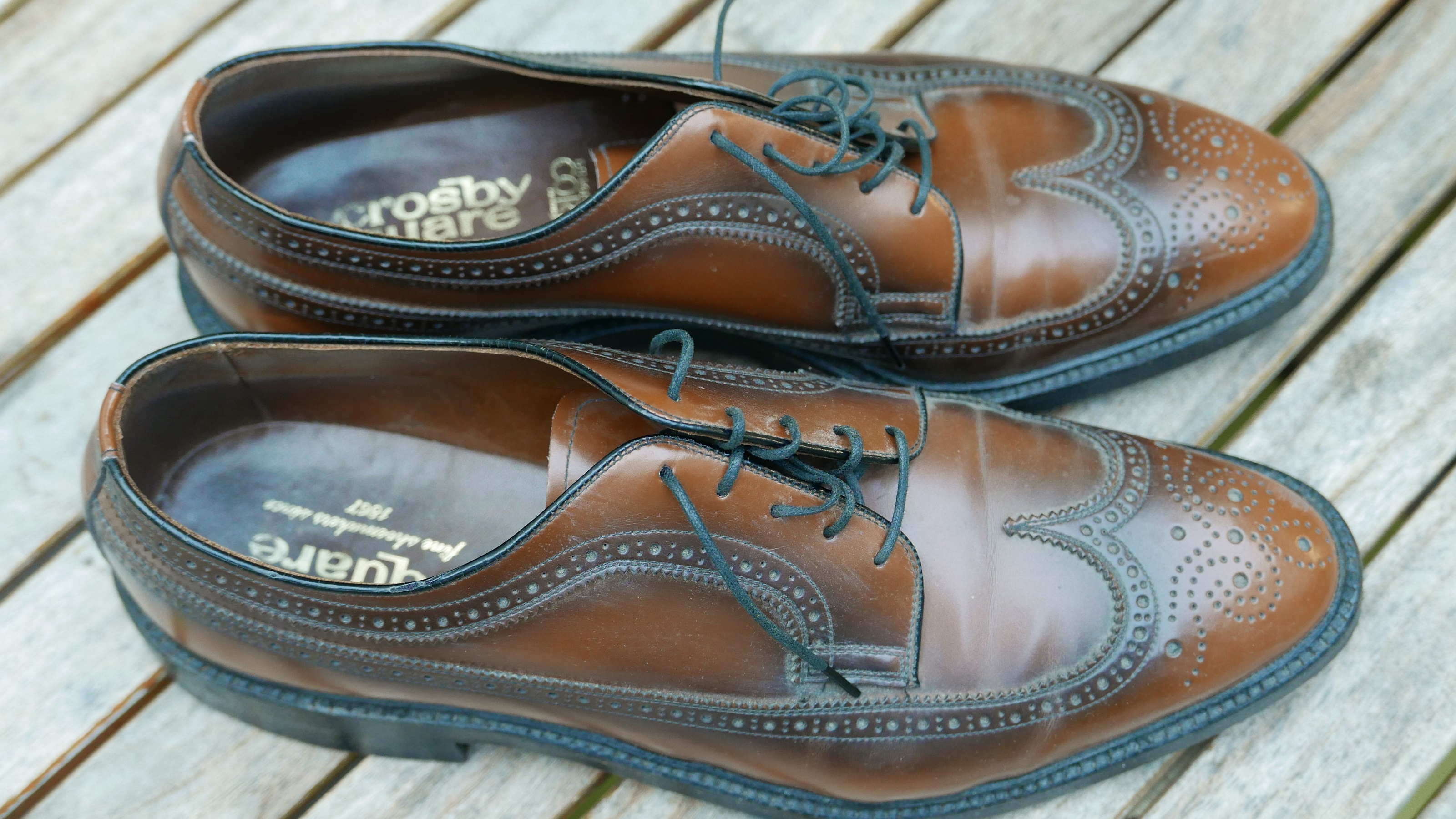
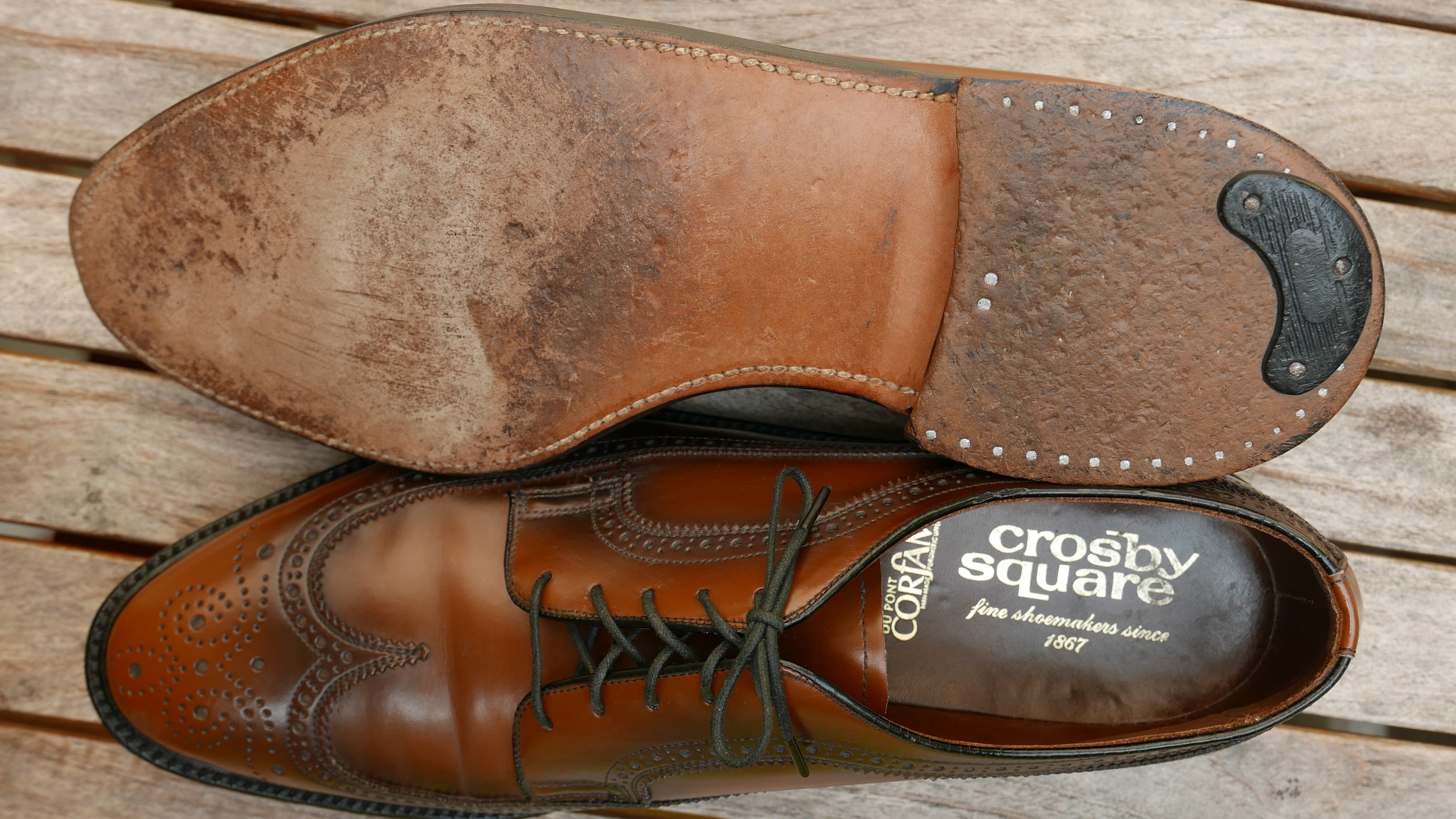
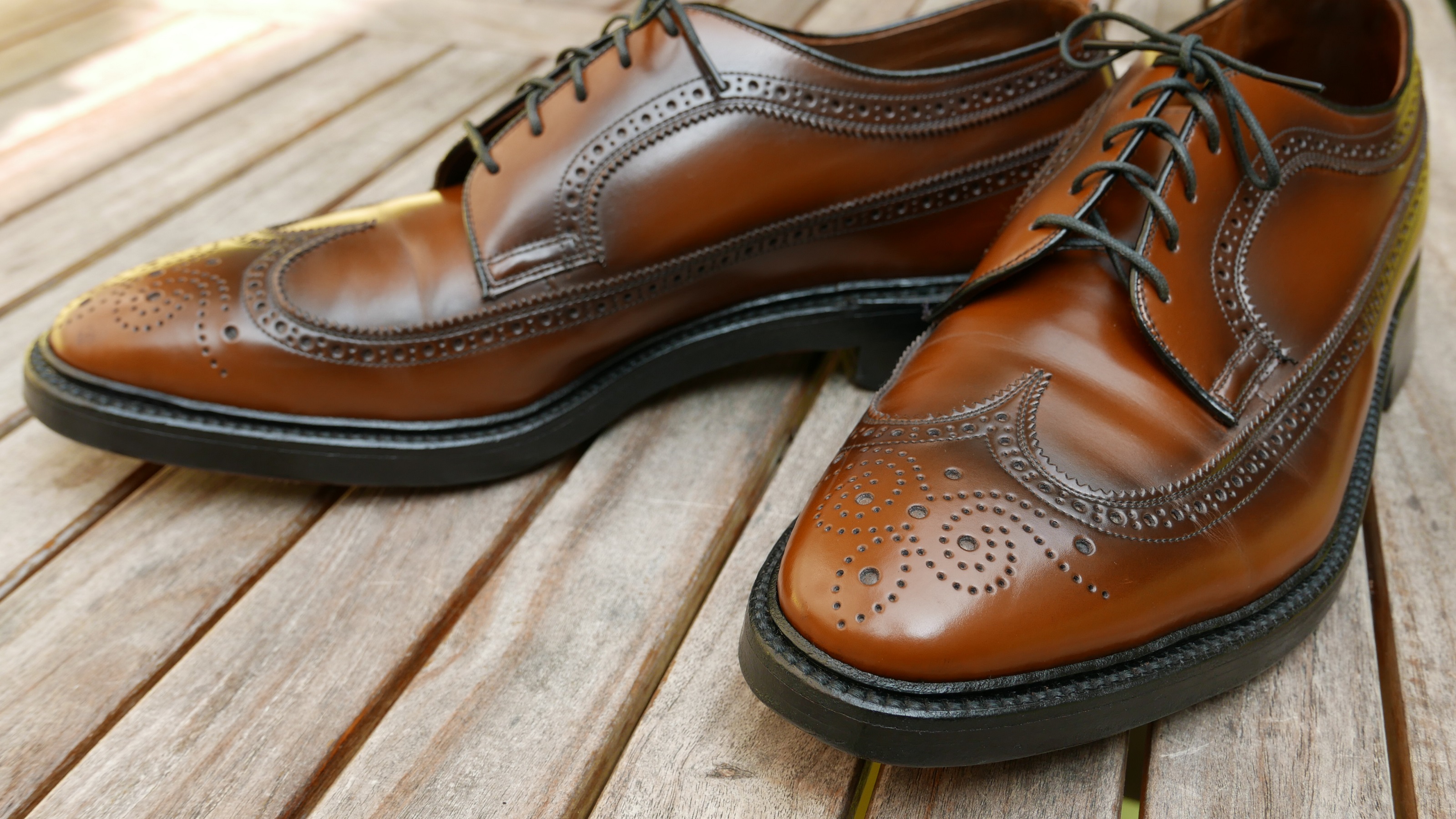
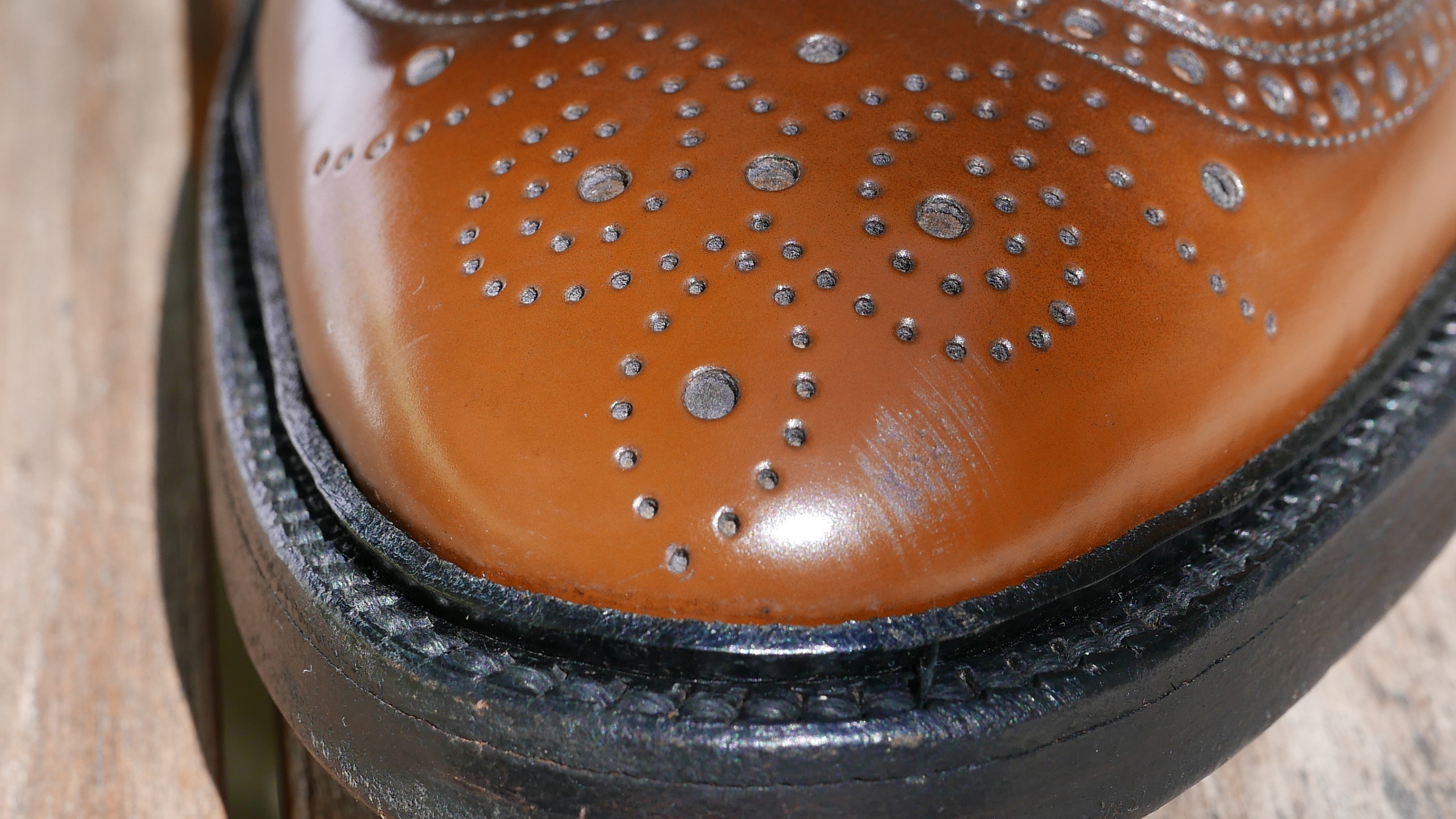
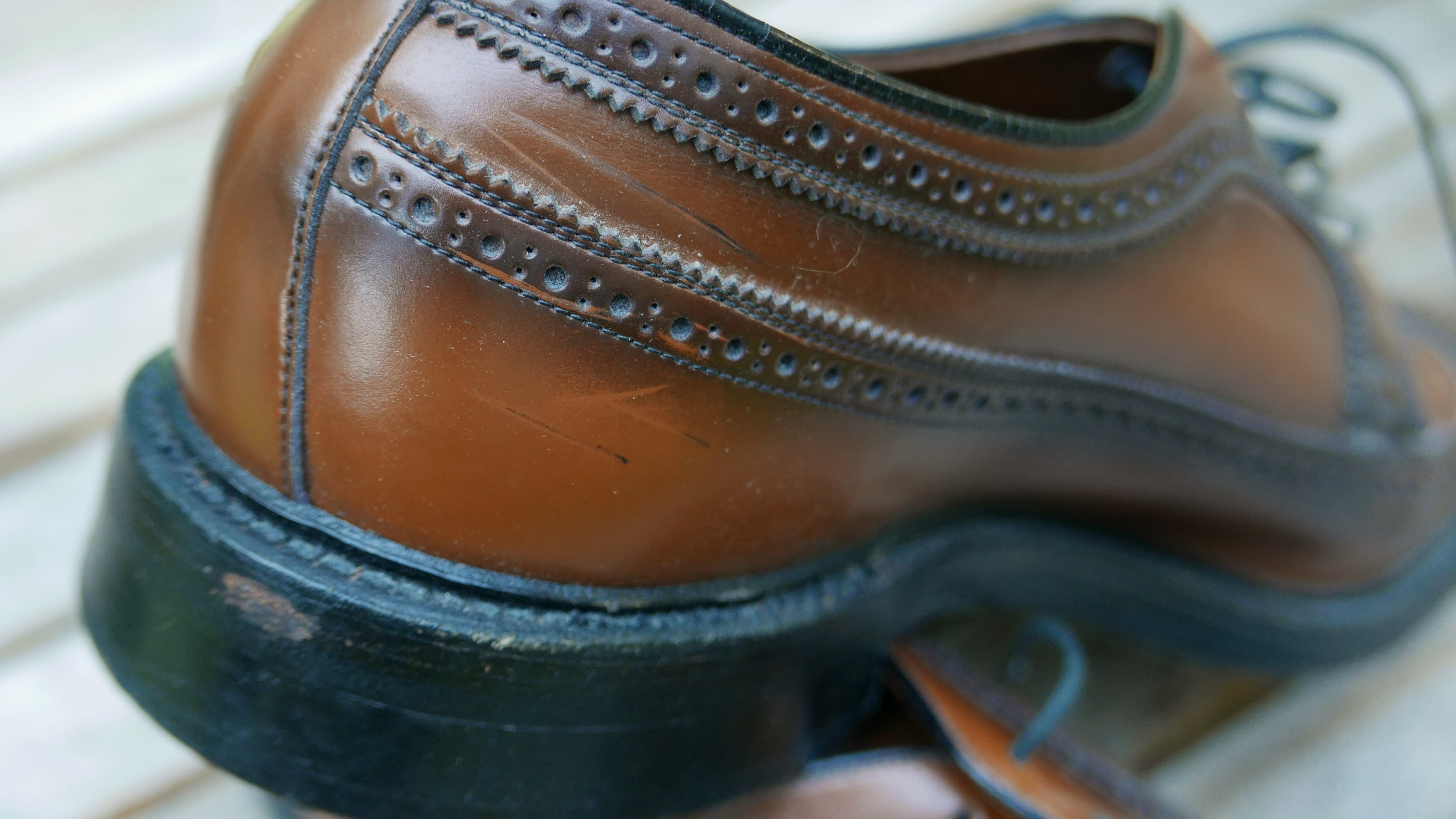
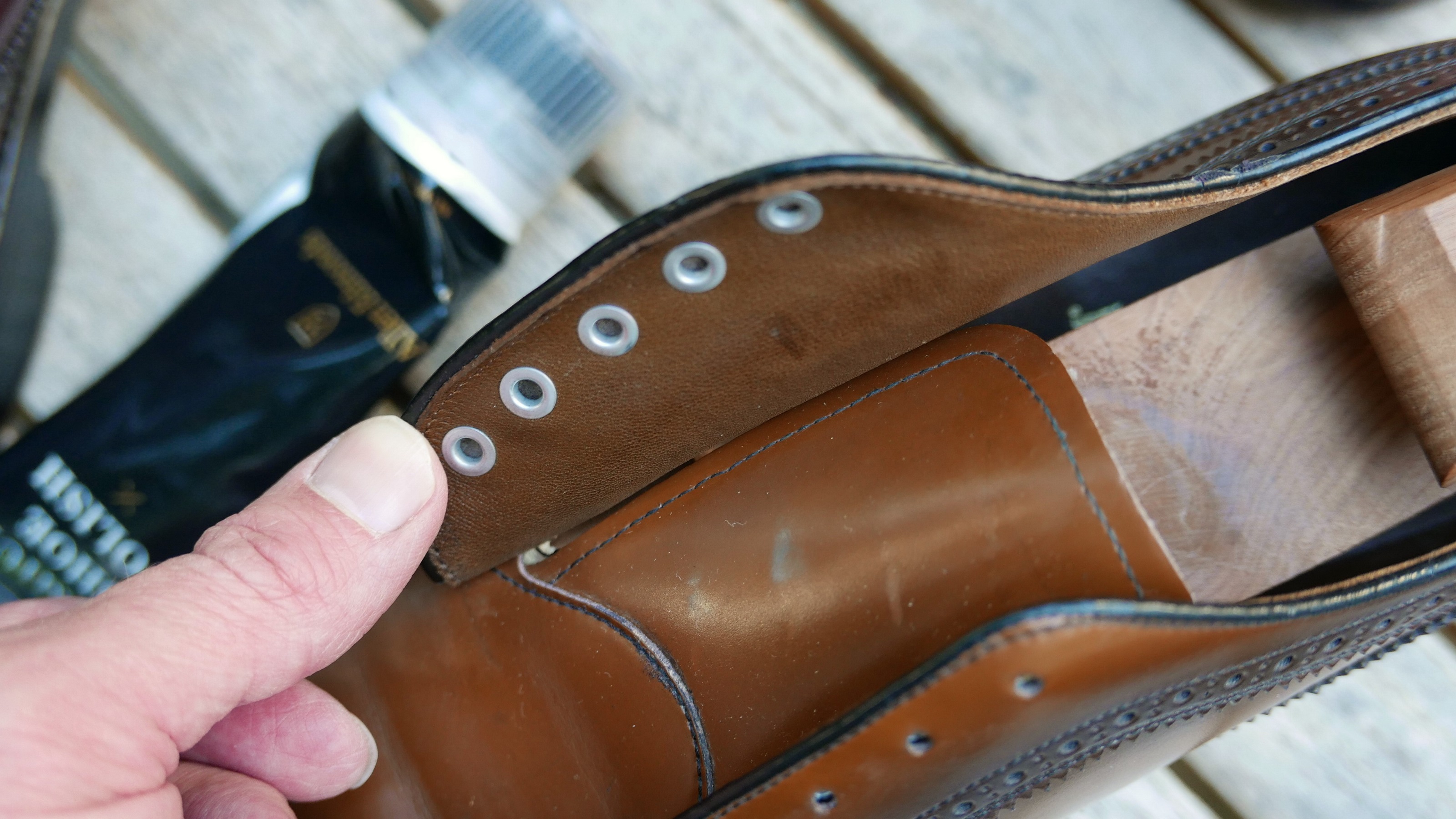
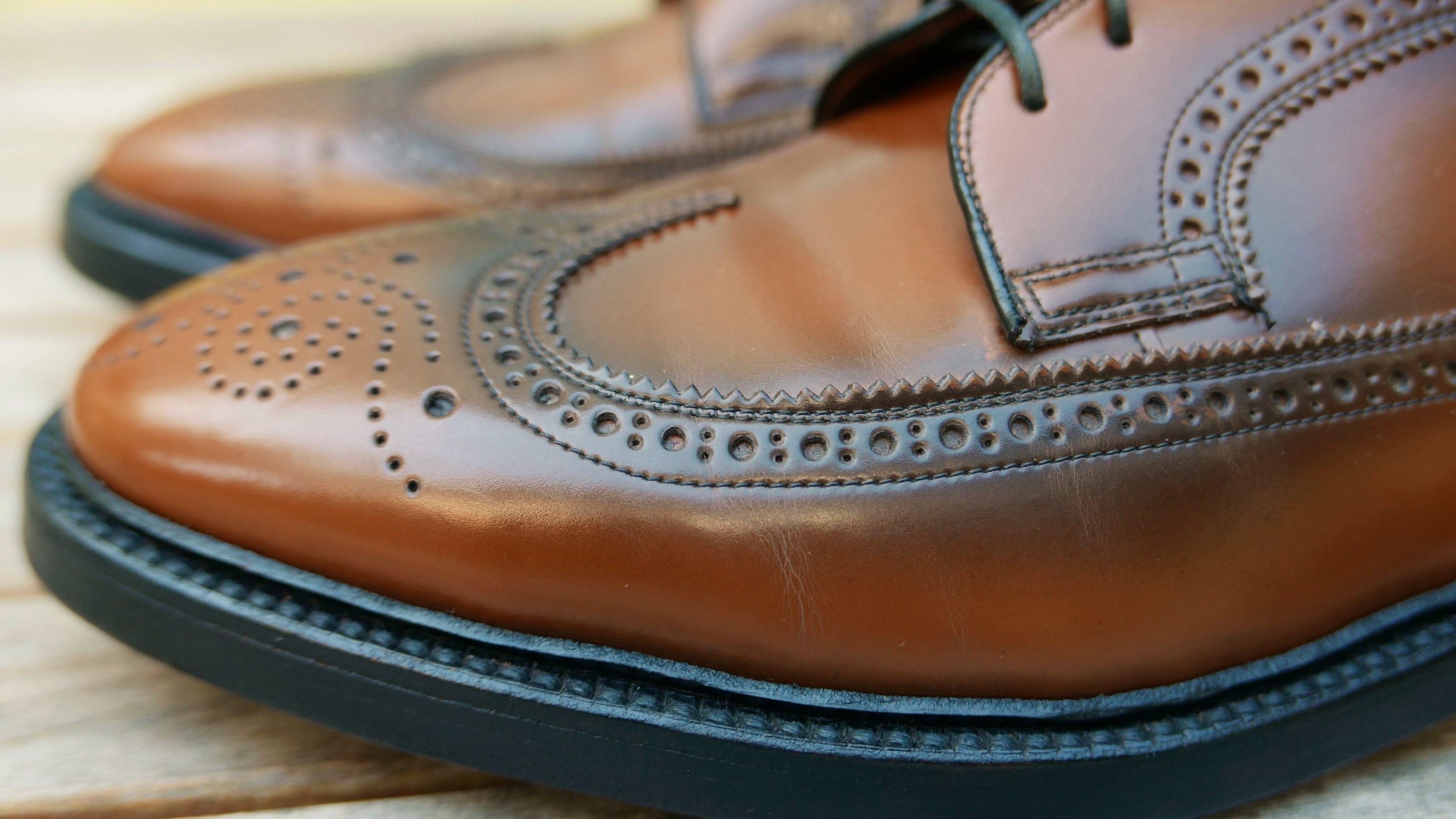
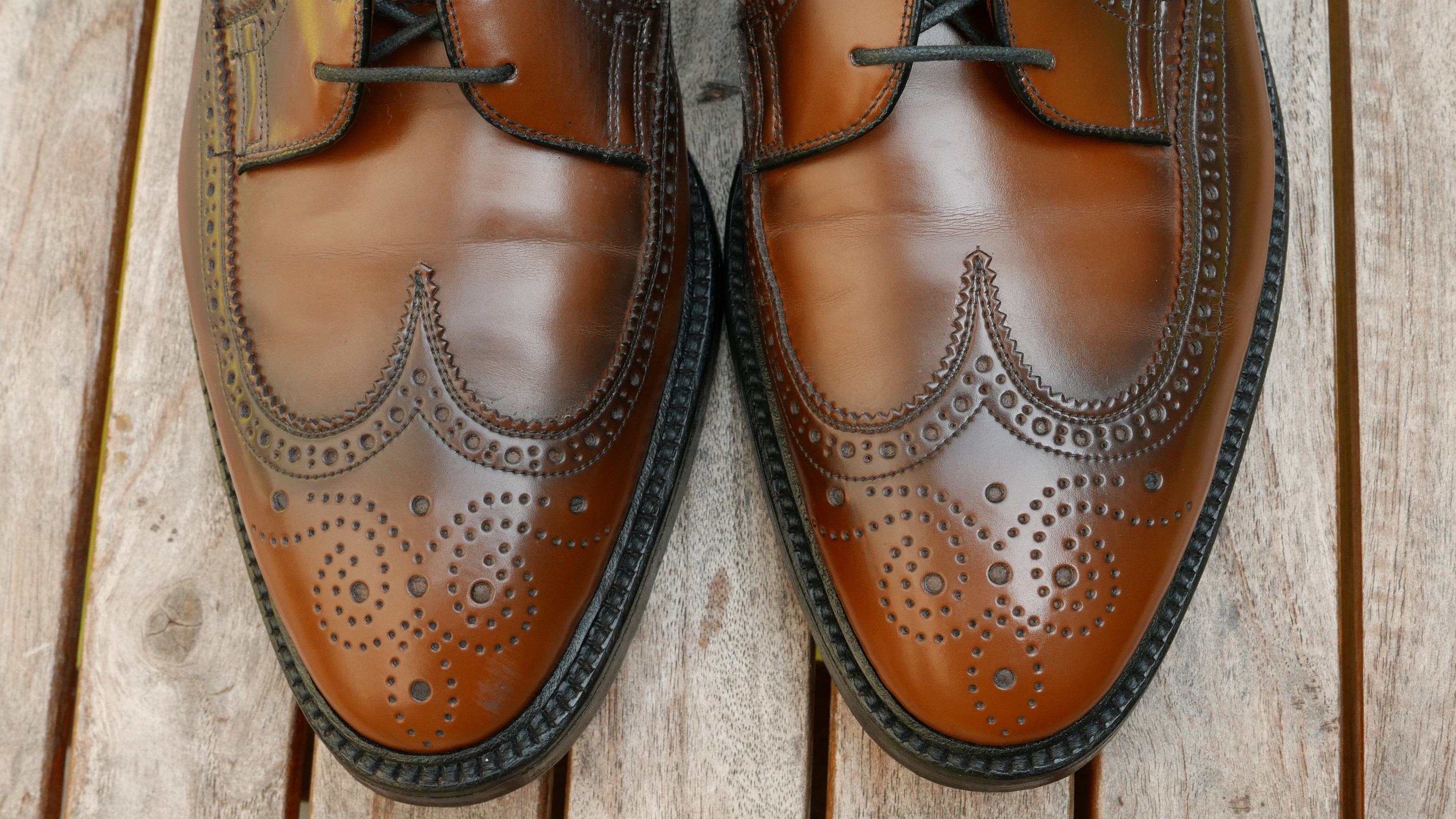
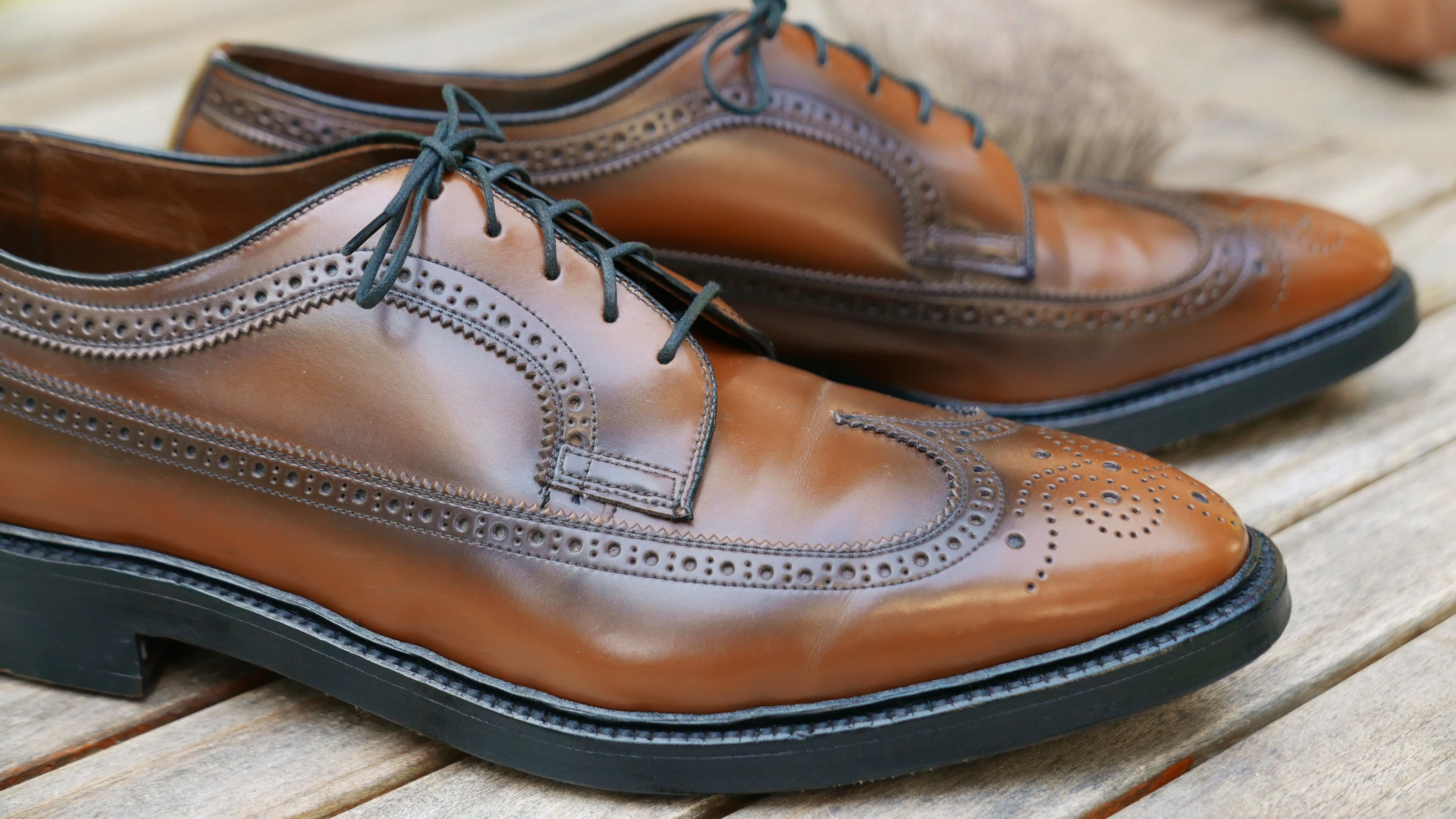
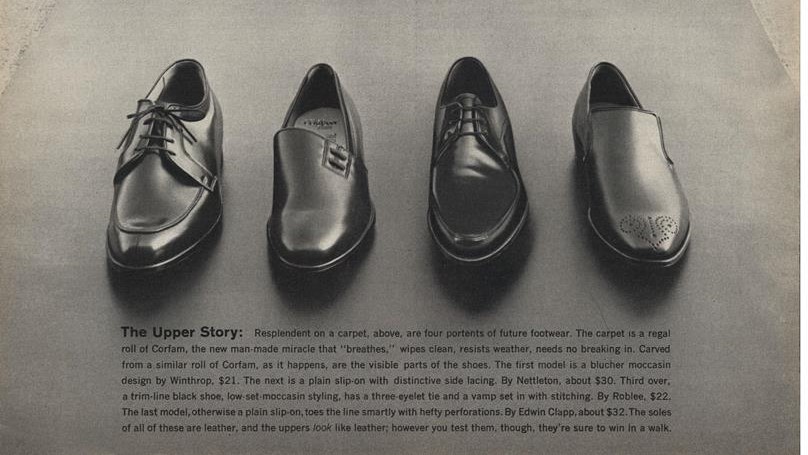
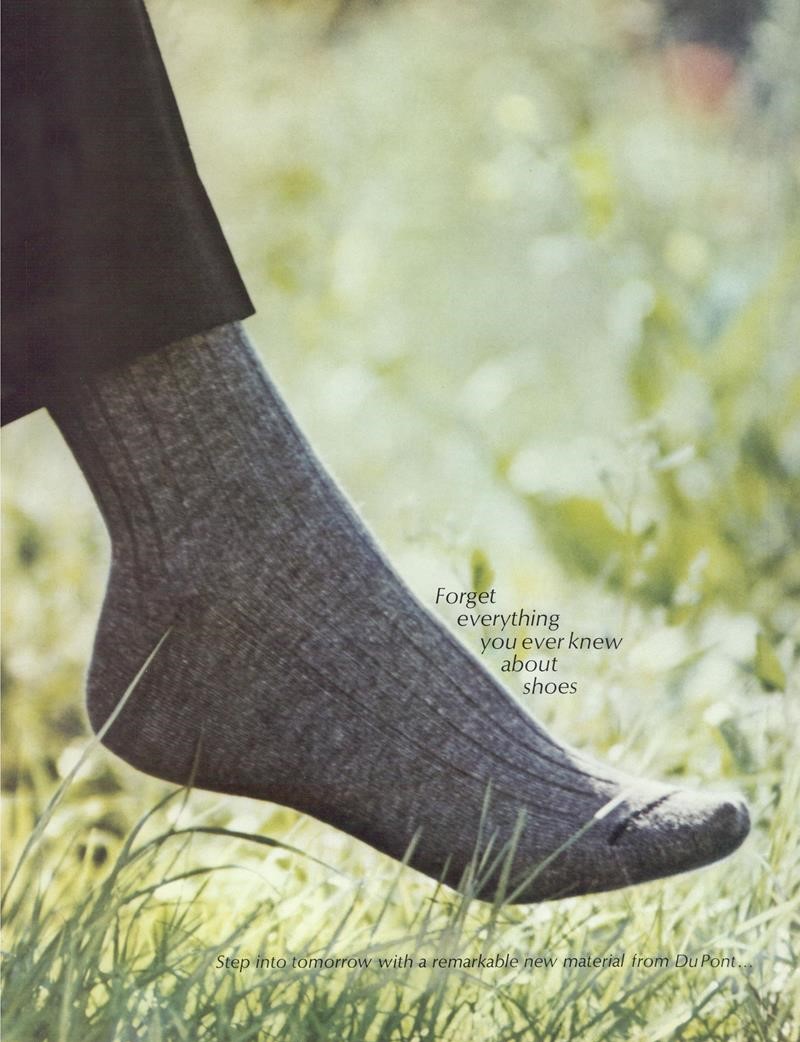
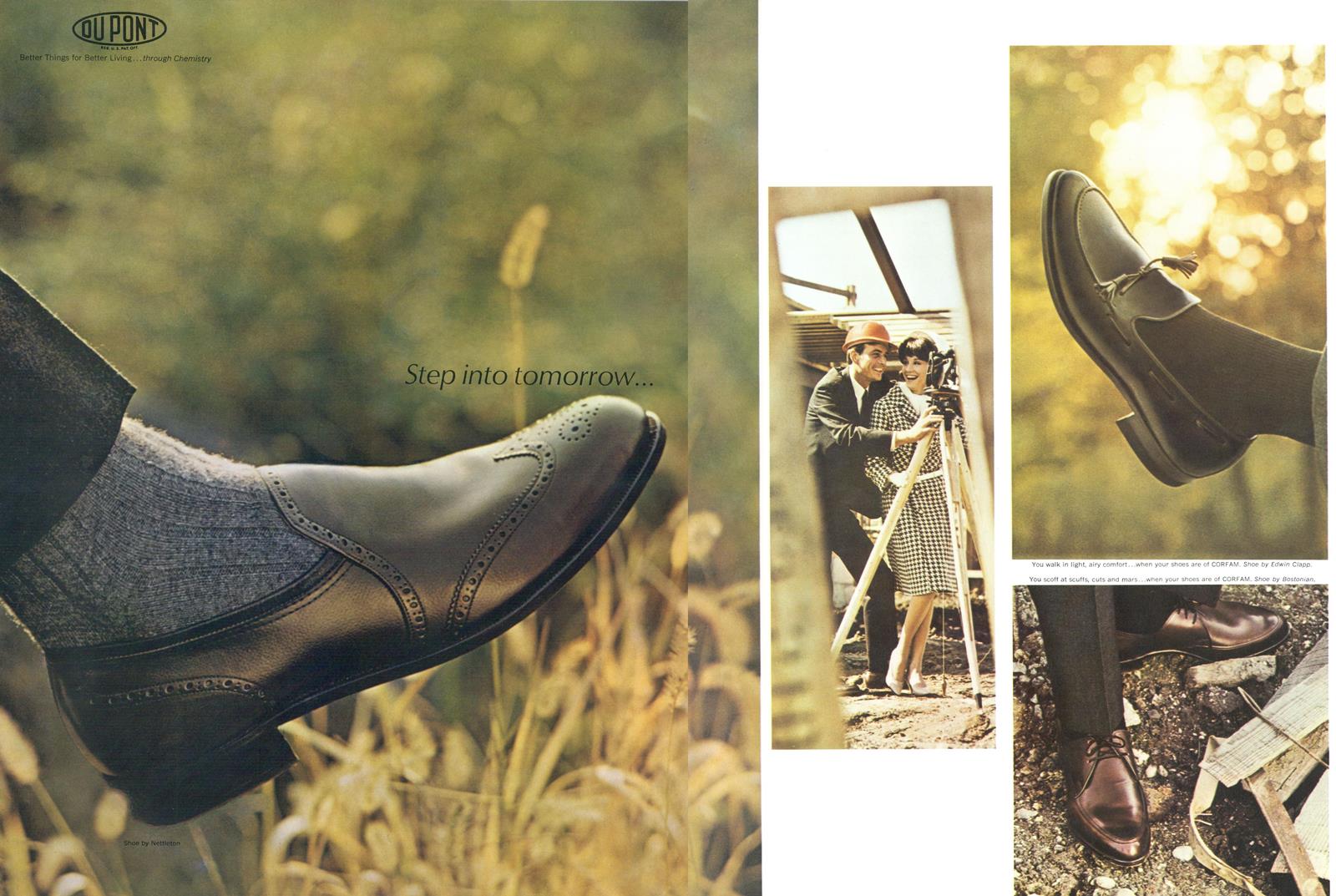
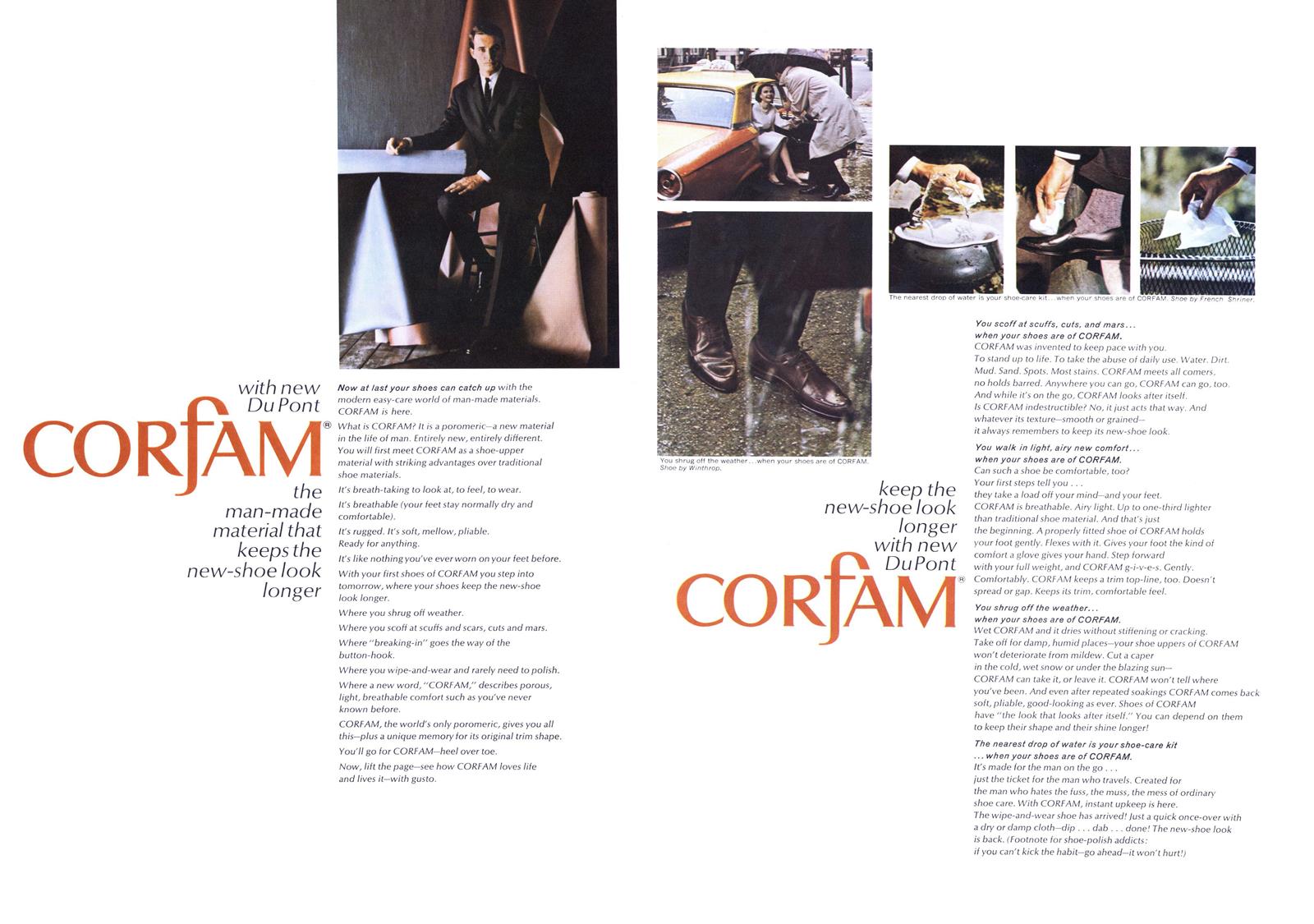
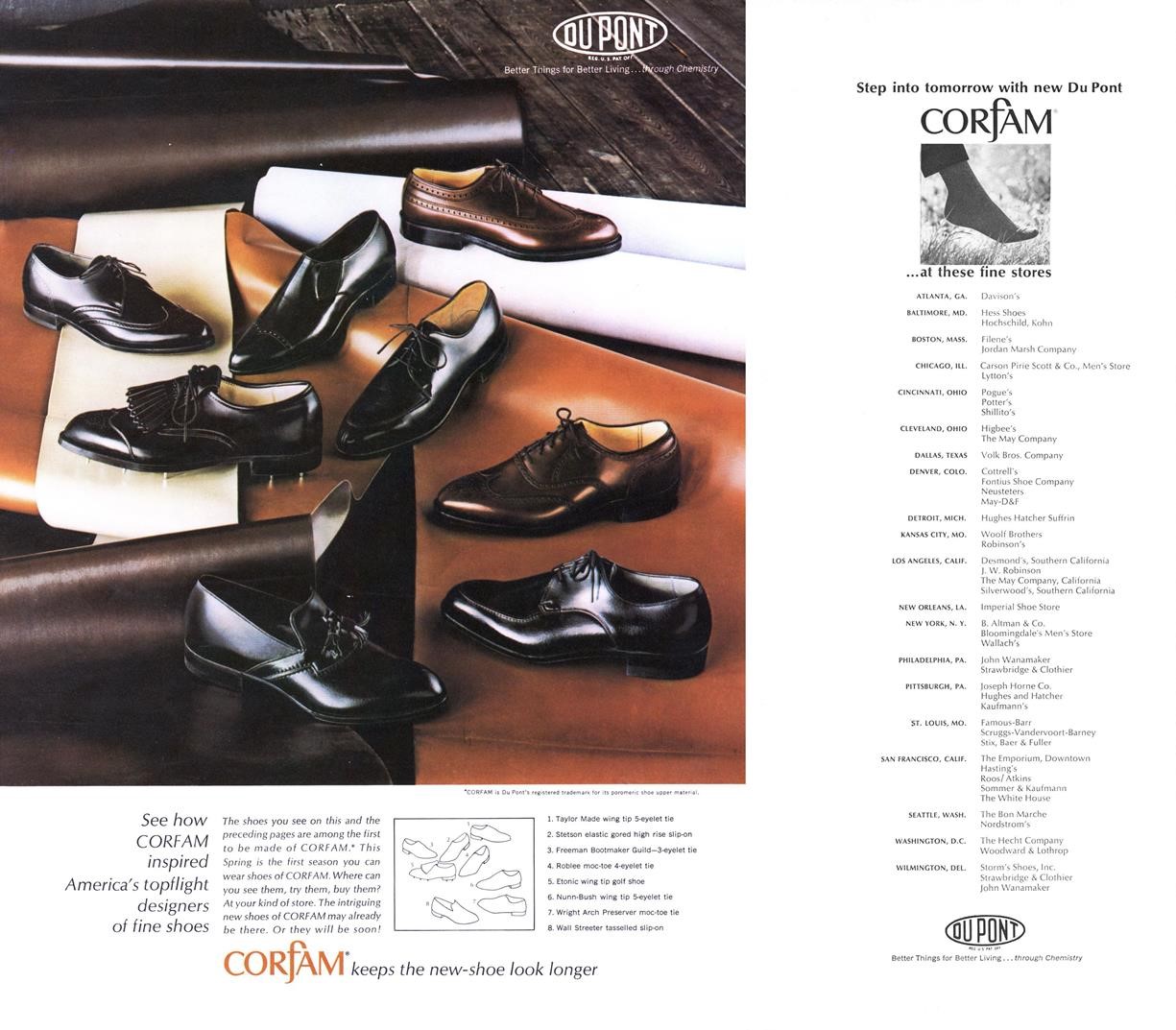
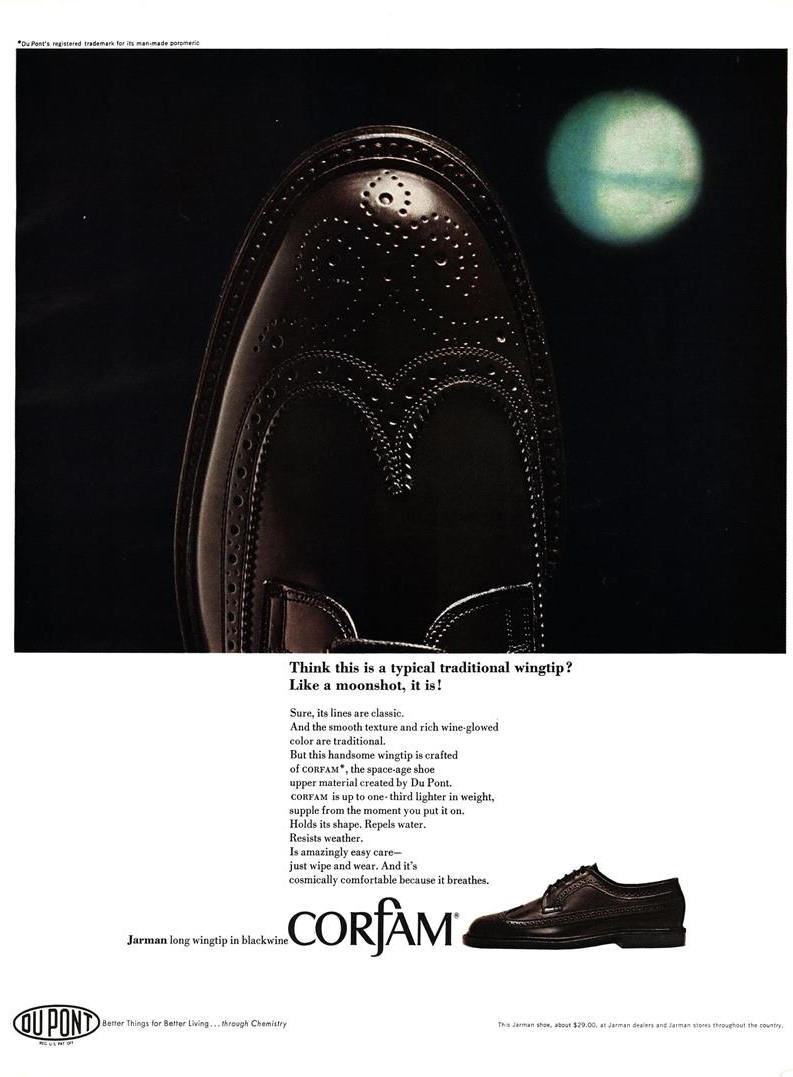
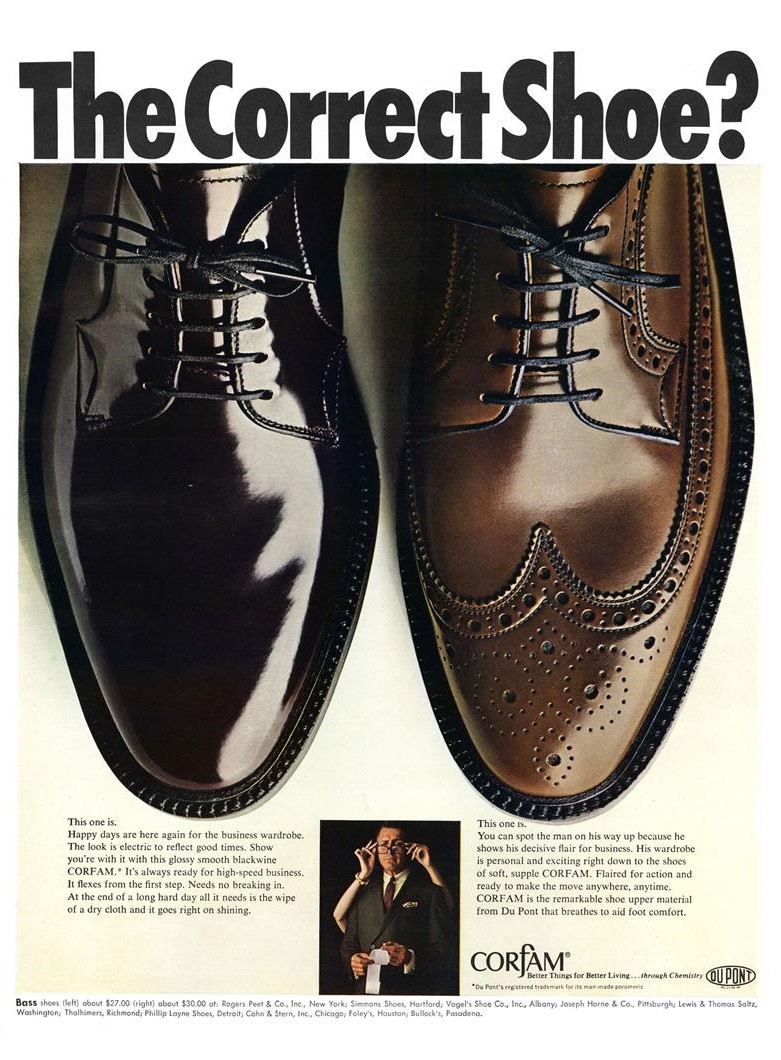
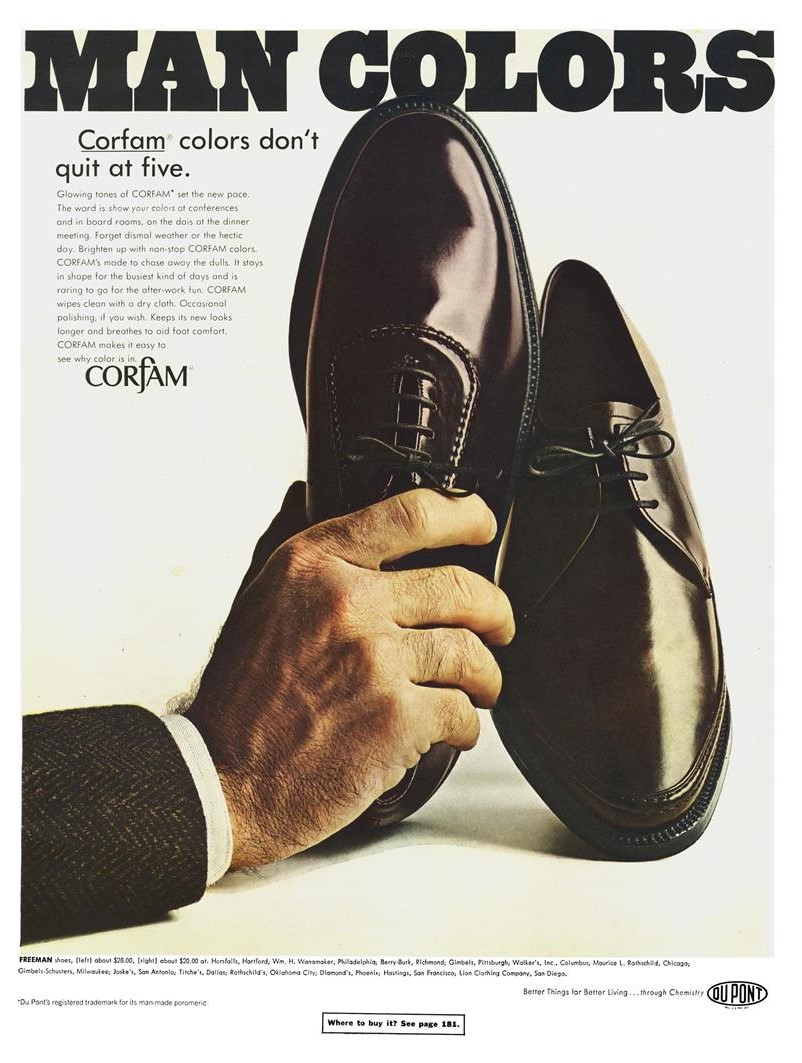
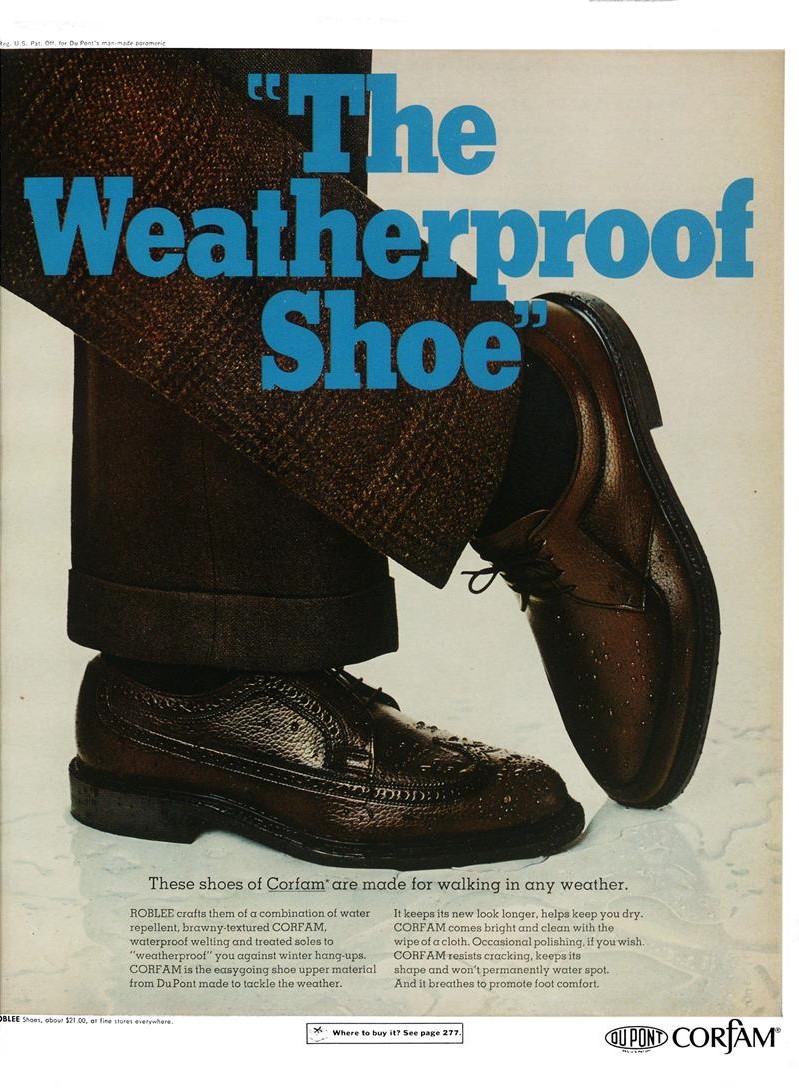
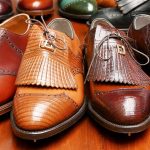

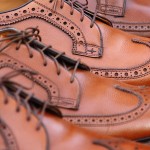
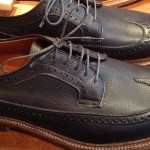
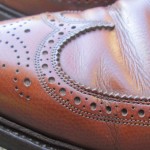



This is interesting, my daughter showed me recently her brand new vegan shoes, they also look perfectly like leather. Also that reminds me the discussions about artificial meat I had with me parents, when I was a boy end of the 60ies and beginning of the 70ies. I was fascinated about the idea, they were disgusted..
A great Corfam review, and I especially enjoyed the great advertisement collection – A couple of thoughts:
(a) DuPont did a great job in marketing the shoes by getting many of the top shoe manufactures on board (at least initially) – Also note that the ads never mention the word “cordovan” which is what DuPont was breezily implying that Corfam blew away.
(b) Never having seen the HBO “Westworld” remake, I can tell you that the original movie made back in the 1960s starred Yul Brynner as the robot (we didn’t use the word android back then) and his performance was pretty doggone chilling.
(c) Corfam’s blaze of glory reminds me a bit of the man-made gem Moissanite that came out about a dozen years ago. Higher refractive index and higher dispersion than diamonds, they are stunning when compared with diamonds (and not all that much cheaper, BTW). So I bought my wife a beautiful pair of earrings… but of course I failed to take into account the DeBeers decades of brainwashing (and my wife, needless to say, didn’t!) Live and learn.
Thanks. I liked the old ads too. My Corfam pair isn’t “weatherproof” since the soles are leather.
Hi David !
In 1969 I bought a pair of Crockett & Jones Corfam shoes from a general retailer in Birmingham UK. They cost close to my weekly take-home pay at that time lol ! Got caught in a shower a couple of weeks later & the soles peeled away ! I got my money refunded ok. Your comment brought the memory flooding ( pun intended lol ) back.
So I think these live on with the horrid things the military calls “CorfRams” (my capitalization). They are hot, usually poorly made, too shiny, and known to follow apart on the second or third wear. The soles are terrible, usually only slightly more durable than foam rubber. I’ve refused to wear them for years now, opting for leather oxfords. I’m not even sure you can find a pair of leather oxfords in a USMC military clothing store. The Navy still wears them some and I’ve heard the Army may bring back brown leather shoes.
Some sellers of Bates High Gloss Uniform shoes list them as Corfam. I bet they look good on the shelf. It would be interesting to see a pair after a year of wear.
In the late 1960s, my dad gave me a pair of Corfam LWBs that he purchased through the factory at which he worked, since, in my teens, my shoe size was the same as his. Steel toes, maker unknown, can’t remember if the soles were leather or synthetic. However, they wore well, were comfortable, and did not crack, rip, or peel the way a cheap vinyl upper would. I outgrew them, but didn’t outwear them.
Great story. You can still find Corfam pairs on ebay occasionally. I think my Corfam wearing days are behind me.
I found a pair of NOS British Walker longwings made of corfam, and I wear them when I know there’s going to be a downpour because they dry off so easily. The leather soles and lining are very well made, so the shoe is durable, too. With so few people wearing longwings these days, no one really knows what to think of their material.
I bought and wore a pair of corfam boots in 1968. They came to just below my knees and were lined with some warm material. They were great. Waterproof and warm when I rode my bike through puddles of rain on the UC Davis campus. I loved them !
Does anyone know the etymology of the term “Corfam”? If so, I’d love to hear it. My guess is that it may, at least the “cor” part, be from the same root as “excoriate” – Latin “corium” meaning hide, skin, leather (“cuir” in French). If you have a credible etymology for Cor, please point me to it. I’m Rod at:
rodm -at- total.net
Thanks!
I know that nearly four years have passed since you posted your question. You were on the right track. The name Corfam was a combination of the word “corlaceous”, meaning “leather-like”, and the acronym for “footwear and accessories material”.
Someone else mentioned that Corfam’s marketing implied it was intended as a competitor to shell cordovan. They are correct. DuPont envisioned Corfam as an improvement on shell cordovan and priced it accordingly.
Corfam wasn’t a total failure. Although it never caught on with men after the first wave of enthusiasm in 1964, it achieved modest success with women’s and children’s shoes.